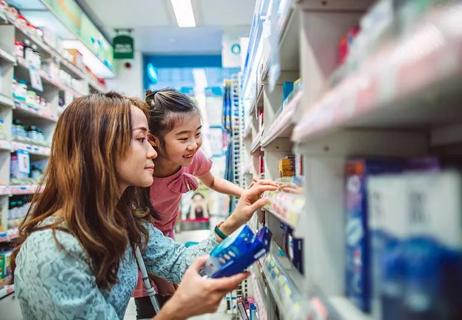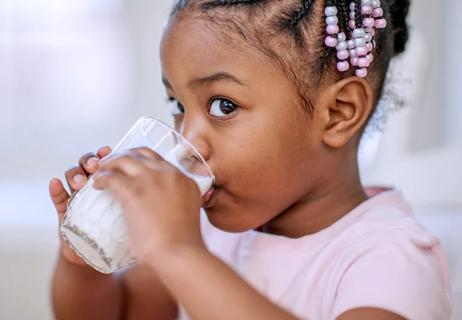How to keep kids' diets healthy while the sun heats things up

With longer days, hotter temps and no school, there are a lot of ways for kids to fill their summer. Whatever they do, there’s no reason to let their diets slip up during the warmer weather months.
Advertisement
Cleveland Clinic is a non-profit academic medical center. Advertising on our site helps support our mission. We do not endorse non-Cleveland Clinic products or services. Policy
Making sure your kids stay consistent with their eating habits during the summer ensures both short-term and long-term health benefits. Keeping them full of the vitamins and nutrients they need helps them stay active and sets consistent healthy eating habits for them at any time of year.
Pediatric registered dietitian Jennifer Hyland, RD, gives us some insight into how to keep kids healthy during the summer, tips on developing good eating habits and even leaves us with some great summer recipe ideas.
According to Hyland, there’s no particular nutrient or vitamin kids need more during the summer. “The challenge is typically kids aren’t getting the necessary vitamins and nutrients they need anyway,” she says. “Truth be told, we hope kids are active all year long so needs don’t significantly change in the summer.”
Instead, she says, the most important thing to keep in mind during the summer is keeping your kids properly hydrated.
“If kids are outside, being active and sweating, they need to stay hydrated,” Hyland says. And though it may be tempting to just let the kids grab whatever they want out of the fridge, it’s important to keep control over what they drink.
“Sugar-sweetened drinks are not recommended at any time of year,” she says. “That includes sweet teas, lemonade, juice or soda.” Instead, she suggests things like adding fruit to water for flavor, or even sparkling flavored waters as a way to keep things fun and interesting.
Advertisement
She also says 100% fruit juice is okay in moderation. But no more than a cup a day,” she suggests. “Kids, especially when they’re thirsty, can down several cups of juice at a time, so you want to keep them from drinking too much sugar.
Yes, we can also get important water through food and keeping those kinds of snacks around is a great way to make sure your kids stay healthy and hydrated. “Fruits and veggies generally have great water content,” Hyland points out. “Fruits like watermelon, melons and berries are great for that. And veggies like cucumbers, celery and bell pepper have a lot of water, too.”
While you don’t have to only offer your kids these water-laden snacks, it’s a good idea to make sure you’ve got them mixed in to help with those hydration efforts.
Hyland says sports drinks should be reserved for older kids, specifically those who are exercising an hour or more a day. “It’s just a lot of added sugar and it’s not necessary unless kids are highly active,” she points out. “If they’re young and just being moderately active, playing with friends, they don’t need it. If they’re an older kid or teen and playing baseball or soccer all day, there is a place for sports drinks but water should always be the priority.
Summer is high time for ice cream, popsicles and other tasty, cold treats to help kids stay cool. But just because you want to keep them healthy doesn’t mean you have to ditch these items altogether. And, yes, there are plenty of alternatives you can cycle in.
“We never want to say no, your kids can never have ice cream or popsicles or other cold treats. There’s absolutely a place for that and giving them those treats from time to time can keep them from craving it as much,” Hyland says.
That said, there are some great alternatives to use for more regular treats that don’t load your kids up with as much sugar. Hyland suggests. “You can find 100% fruit pops at your grocery store or, if they like something creamier, Greek yogurt bars,” she says. “They taste like ice cream but they’re made of Greek yogurt so your kids are getting more protein.”
But, Hyland adds, you can also whip up homemade treats. Not only can this be more convenient and save you some money, but you have more control over the ingredients.
Some ideas from Hyland include:
Advertisement
“Again, we don’t want to deprive kids of these fun things,” Hyland says. “It’s about giving them snacks from which they can get key vitamins and nutrients. If you can use fruits and as well as protein in a snack, you’re giving them long-lasting energy rather than energy from sugar which will not stick with them as long.”
There are two additional points Hyland stresses for keeping kids healthy throughout the summer.
Many popular snacks like chips and pretzels are high in refined carbohydrates, which turn to sugar in the body. And that’s not a great combination for kids at any time but especially during a busy time like summer. “Those sugars are quickly digested and don’t sustain a child’s energy or keep them feeling full as long,” Hyland notes.
The goal is to give kids food that gives them more sustainable energy throughout the day and keeps them feeling full so they don’t fall into a cycle of over-eating. “Again, it’s all about fruits, veggies, healthy fats and proteins,” she adds. “We might think that it’s simply about giving them calories but we really want to make sure the calories we give them will keep them full and won’t be burned so quickly.”
One other important aspect of summer eating, according to Hyland, is keeping kids’ eating schedules consistent with the school year. “When kids are in school, they don’t have free access to snacks whenever they want,” she says. “And we want to keep that same pattern going while at home.”
Advertisement
It’s all about balance, she says. It’s okay for kids to have (healthy) snacks every couple of hours, it’s just important to keep that structure in place. “Keeping them on their main three meals a day and then having planned snacks is a good way to approach it,” she says. “As a parent, you might not always be able to swing it. But as much as you can keep them to that set meal structure, the better behavior it sets.”
Meal planning is a great way to provide that necessary structure and ensure healthy meals and snacks at any time of year. But some ideas work especially well in summer.
Hyland suggests that when you’re meal-planning and building meals, be sure to get all those necessary food groups – protein, whole grains, fruits, vegetables – into the meal. Changing up options and even getting different foods on the plate can be fun for younger kids and get them more engaged in eating healthy foods.
While salads are generally a tried-and-true option, consider changing things up a bit. “Pick a protein, like chicken, and then lay out all the options to create a salad bar for kids to build their own,” Hyland suggests. “Try different varieties, like some healthy Mexican salad options.”
Another option that might seem counter-intuitive at first is soups. “Many people don’t realize that you can serve soups cold, as well,” Hyland says. “You can make yourself a large batch of summery soups – like a gazpacho or vegetable soup – and freeze them. Then, when you need, you can either heat them for serving or defrost them a bit to serve cold.”
Advertisement
Cold pasta salads are another great summer item that can be stored in the fridge and dished out over several days. “Using whole grain or bean-based pasta which can deliver both fiber and protein,” she says. “You can throw things on there like a little cheese or turkey pepperoni as well as veggies like bell peppers and zucchini.”
And if you’re running low on time – not uncommon during a busy summer! – you can keep quicker meals like sandwiches and wraps healthy by relying on whole-grain bread and mixing in fruits, veggies and proteins. A combo like spinach, chicken and hummus in a wrap, with some strawberries on the side, isn’t just delicious, she says, but nutritious and filling. Remember to get the kids involved and always make it fun.
Learn more about our editorial process.
Advertisement

Most kids get enough protein in a regular diet — too much can have side effects

Look for snacks that are low in sugar and high in fiber, protein and healthy fats

Kids typically get all the nutrients they need from food, but supplements can add peace of mind

The five major food groups offer different types of nutrients in the right proportions

Be a good role model, set family meal times and involve your kids in meal planning

Fiber can lower blood pressure and promote healthy bowel function

Many active children don’t consume the recommended amounts

The best parenting style balances enforcing rules and showing plenty of love

Tips include cutting back on sugar, focusing on exercise and managing stress

It can be harder to let go when you’ve invested time, energy and emotions — but it might be the healthier choice long term